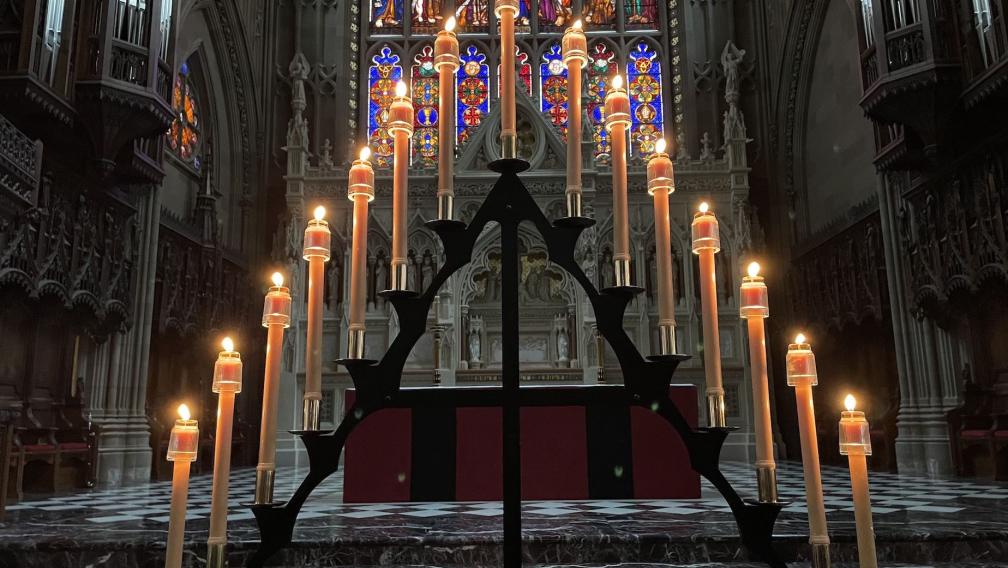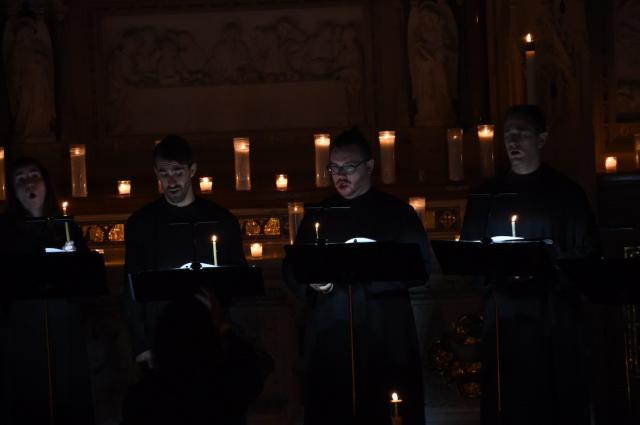Tenebrae: Shadows and Darkness in Holy Week

Tenebrae is a Holy Week liturgy that Trinity Church Wall Street will offer on Wednesday, April 13, at 6pm.
Unlike traditional services on Palm Sunday, Maundy Thursday, Good Friday, and Easter Day, Tenebrae has no direct connection to the gospel accounts of the last week of Jesus’s earthly life.
Here’s how Trinity describes Tenebrae in Wednesday evening’s service bulletin:
The name Tenebrae (the Latin word for “darkness” or “shadows”) has for centuries been applied to the ancient monastic night and early morning services (Matins and Lauds) of the last three days of Holy Week, which in medieval times came to be celebrated on the preceding evenings. As we meditate on Christ’s journey to the cross in poem, anthem, song, and story, one by one the candles and other lights in the church will be extinguished until only a single candle, considered a symbol of our Lord, remains. Toward the end of the service this candle is hidden, suggesting the apparent victory of the forces of evil. At the very end, a loud noise is made (symbolizing the earthquake at the time of the Resurrection— Matthew 28: 2), the hidden candle is restored to its place, and by its light all depart in silence.
Tenebrae at Trinity begins with a kind of candelabra (see image at top of page), called a hearse, holding fifteen candles. The series of readings, hymns, and meditations will include music from Purcell, Poulenc, Bruckner, and Monteverdi; poetry by Mary Oliver and Madeleine L’Engle; prayers from the late South African Archbishop Desmond Tutu; and meditations from Wendell Berry, Thomas Merton and Barbara Brown Taylor.
In a video interview in March 2021, Trinity’s Vicar, the Rev. Michael Bird, spoke of the importance of Tenebrae to Trinity, its clergy, and its parishioners.
“Tenebrae…allows us to meditate on Christ's journey to the cross.”
“We use this to mark time and space as we tell the story of the Passion.”






